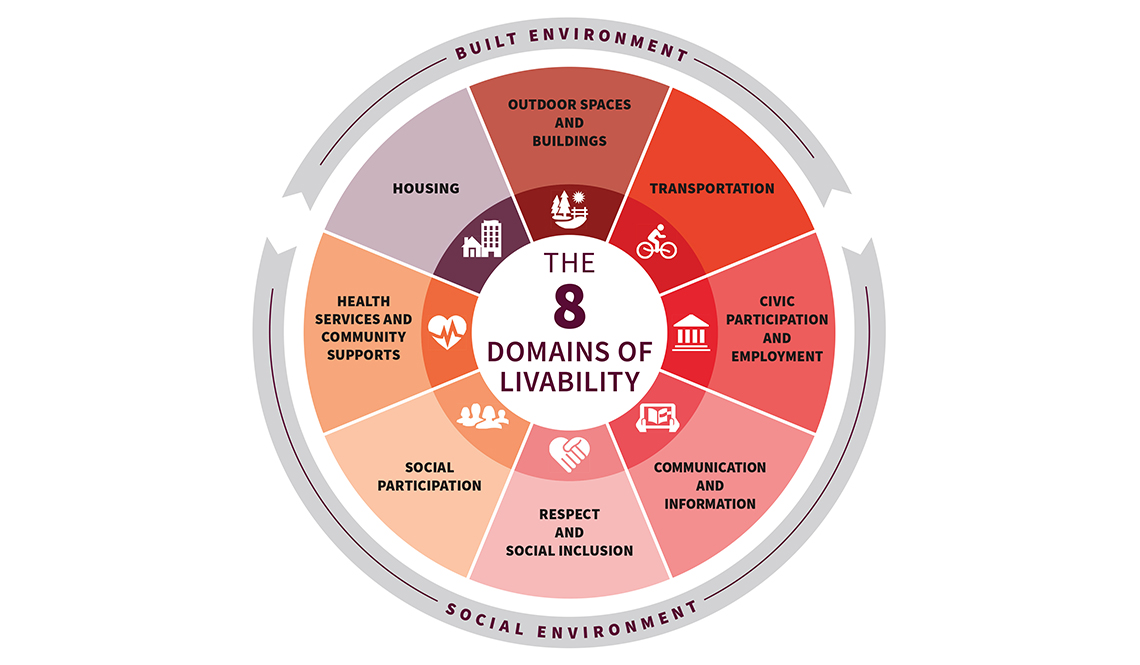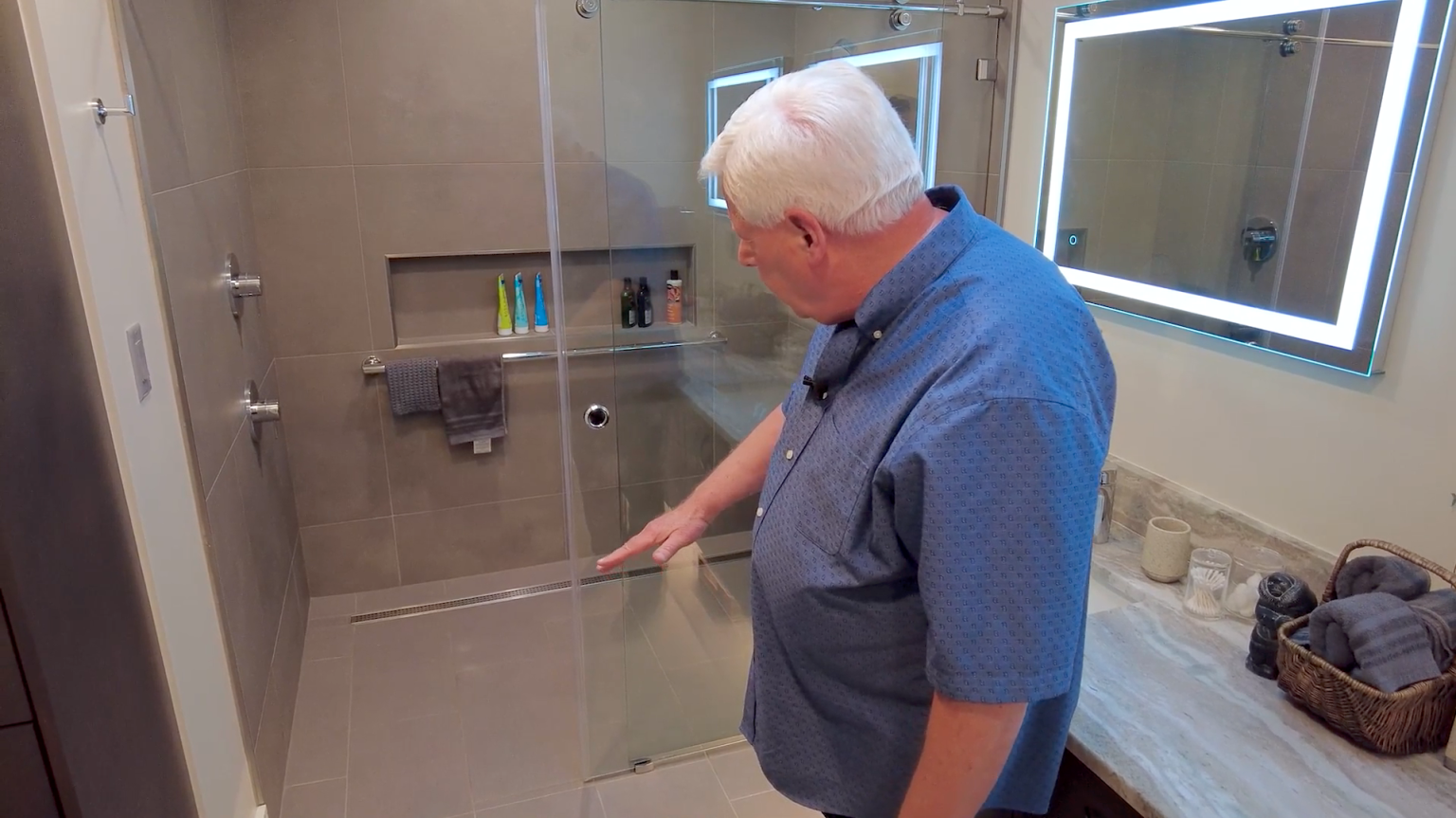North Carolina’s Aging Population
North Carolina ranks in the top 10 states in the U.S. for the number of people 65 and older. Aging population issues include increasing healthcare costs, inadequate mental healthcare, social isolation, ageism, elder abuse, inequitable access to resources, the need for affordable and accessible housing and transportation, burdens on family caregivers, and caregiving workforce needs.

The Challenge
The increasing number of older adults as a share of the total population is a global phenomenon. According to the United Nations, by 2050, 1 in 6 people worldwide will be over the age of 65, up from 1 in 11 in 2019. In the U.S., the 2020 Census found that 1 in 6 Americans were over 65; in 1920, the proportion was less than 1 in 20. In 2019, the Census Bureau projected that by 2034, older adults will outnumber children under the age of 18 for the first time in U.S. history (Vespa/U.S. Census Bureau 2019).
Older adults encompass diverse population groups with differing abilities and needs, from the relatively healthy and self-sufficient “young old” (ages 65-74) to older cohorts who often require special care. Persons living with Alzheimer’s disease and other dementias comprise an increasing share of the population, particularly among older age groups.
North Carolina ranks in the top 10 states in the U.S. for the number of people 65 and older. Aging population issues include increasing healthcare costs, inadequate mental healthcare, social isolation, ageism, elder abuse, inequitable access to resources, the need for affordable and accessible housing and transportation, burdens on family caregivers, and caregiving workforce needs. According to the NCDHHS Division of Aging and Adult Services, one in five North Carolina residents will be older than 65 by 2025; an estimated one in four adults over 65 live alone; and one in five adults identify as caregivers, of whom 62% care for someone 65 or older.
A major challenge for communities is to adapt physical and social infrastructure to meet peoples’ needs as they age. A key opportunity is to leverage older adults’ life experience and skills for the positive contributions they can make to the economy and society as a whole. North Carolina and 15 communities within the state are part of the AARP Network of Age-Friendly States and Communities (see page 2). The overall goal is to enable older adults to lead healthy, engaged, and fulfilling lives while benefiting all community members.
Executive Order No. 280, signed by Governor Roy Cooper in May 2023, affirms North Carolina’s commitment to building an age-friendly state by developing a Multisector Plan for Aging by May 2024. Issue areas highlighted by the Executive Order to be addressed in the plan include the caregiving workforce, protection of vulnerable adults, nutrition services, access to outdoor spaces, transportation, broadband access, and digital literacy for older adults.
Watch our PBS NC ncIMPACT show and read our blog on Alzheimer’s & Dementia Care to explore more about this topic.
Potential Responses
Short-Term
- Conduct “audits” of barriers and opportunities to creating age-friendly communities (e.g., universal design standards)
- Join the AARP Network of Age-friendly Communities and develop age-friendly action plans
- Establish partnerships to implement North Carolina’s dementia-capable strategic plan
- Explore best practices and initiate pilot projects (e.g., age-friendly and intergenerational housing options)
Medium-Term
- Commit resources to Implementing the state’s Multisector Aging Plan
- Revise community plans, ordinances, and standards to promote age-friendly communities
- Develop and implement strategies to enable older adults to age in place (e.g., age-friendly housing options, walkable street networks, multimodal transportation options, supportive community facilities and services)
- Secure and maintain dementia-capable community designations
Long-Term
- Plan for the long-term adaptation of physical and social infrastructure to achieve the vision of age-friendly communities
- Address inequitable access to resources and other systemic disparities that affect older adults
- Shift to a paradigm of physical, mental, and brain health promotion that actively engages older adults in community life
- Monitor implications of other drivers of change for the health and well-being of older adults and their caregivers
Key Stats
- North Carolina’s 65 and older population is projected to increase by 50% (from 1.8 million to 2.7 million) between 2021 and 2041. The 85 and older population is projected to increase by 114% (from 198,000 to 423,000) during the same period (NCDHHS 2022).
- One in six North Carolinians (17%) were 65 or older in 2021. The 65 or older population varies widely among counties, from a low of 10% for Onslow County (site of Camp LeJeune) to a high of 33% for Transylvania County (NCDHHS 2022). In general, rural counties have higher percentages than urban counties like Mecklenburg (12%), Durham (13%), and Wake (13%).
- In 2020, an estimated 180,000 North Carolinians aged 65 or over were living with Alzheimer’s disease, a figure that is projected to increase by 16% (to 210,000) by 2025. The number of caregivers for persons living with dementia was 356,000 in 2021 (Alzheimer’s Association 2022).
Watch our PBS NC ncIMPACT show and read our blog on Aging in Place to explore more about this topic.
Example: North Carolina Age-Friendly Communities
As of July 2023, 15 North Carolina counties and municipalities had joined the AARP Network of Age-Friendly States and Communities. In 2023, North Carolina became the 11th state to join the network. Network members develop age-friendly action plans, which can use AARP’s eight domains of livability as a framework to make communities more livable for people of all ages.
Matthews, Forsyth County, and Archdale are examples of the state’s age-friendly communities. Mathews’ Age-Friendly Action Plan is structured around four priority domains: outdoor spaces & buildings, transportation, housing, and community support & health services. The Forsyth County Action Plan for Aging Adults identifies six focus areas, each with progress indicators: physical & mental health, financial health, housing & safety, accessibility & mobility, support network, and empowerment & engagement. Archdale’s action plan is integrated with its comprehensive plan, which organizes actions to create a more livable and inclusive community (one of four plan focus areas) around seven categories developed by AARP for its Livable Communities Index.
 Source: https://www.aarp.org/livable-communities/network-age-friendly-communities/info-2016/8-domains-of-livability-introduction.html
Source: https://www.aarp.org/livable-communities/network-age-friendly-communities/info-2016/8-domains-of-livability-introduction.html
Click here to complete our survey about aging drivers of change!
References
AARP (n.d.). AARP Network of Age-Friendly States and Communities.
Alzheimer’s Association (2022). North Carolina Alzheimer’s Statistics.
Archdale, NC (2020). Plan Archdale Comprehensive Plan.
Matthews, NC (2018). 2018 Age-Friendly Community Action Plan.
Forsyth County, NC (2018). Action Plan for Aging Adults 2020-2025.
NC Department of Health and Human Services (DHHS), Division of Aging and Adult Services (2022). 2021 North Carolina Aging Profiles; Dementia-Capable North Carolina: A Strategic Plan for Addressing Alzheimer’s Disease & Related Dementias.
State of North Carolina, Roy Cooper, Governor (2023). Executive Order No. 280: North Carolina’s Commitment to Building an Age-Friendly State.
Vespa, Jonathan, United States Census Bureau (revised 2019). The Graying of America: More Older Adults than Kids by 2035.


